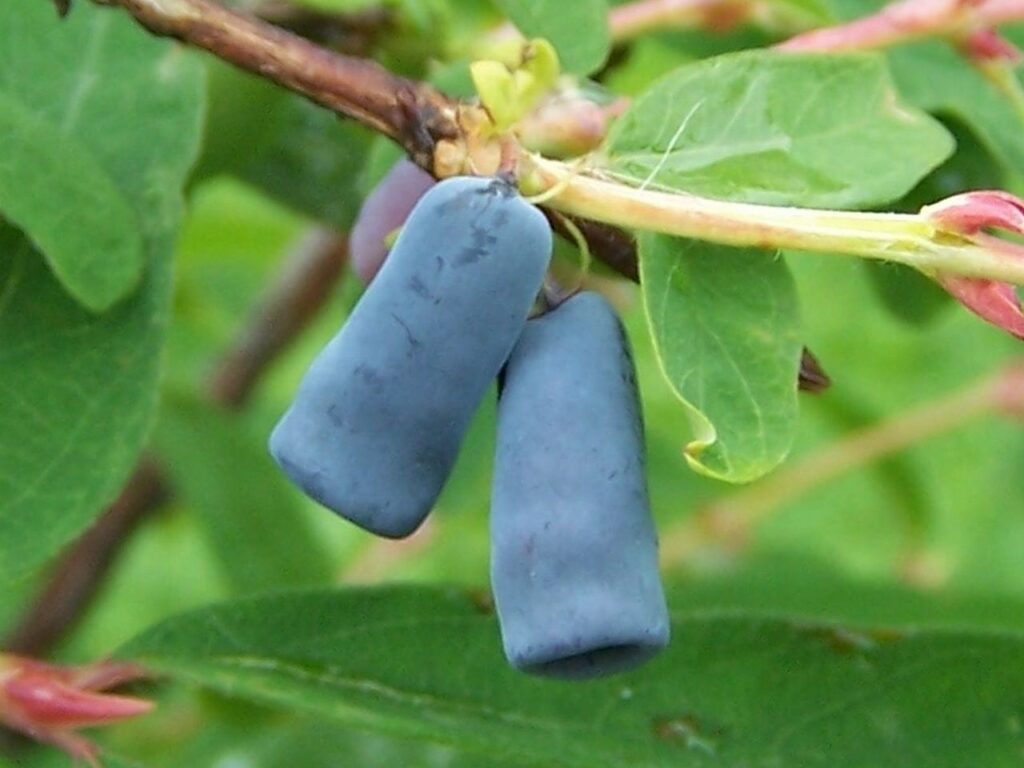They look like honeysuckle flowers because that’s what they are.
Honeyberries are fruiting honeysuckle bushes, so you get the benefit of beautiful
flowers as well as fruit. This deciduous bush are in the genus Lonicera from the family
Caprifoliaceae. Haskaps are known by many names including: Honeyberries, Edible Honeysuckles,
Blue Honeysuckles, Sweet Berry or even the Canadian Honey Berry. The fruit of these delicious
berries resembles a cross between a blueberry and a long grape. Originating from Siberia, these
berries are said to taste like a cross between raspberries and blue berries with a kiwi-like texture.
Each haskap berry contains two twin purple-blue berries inside, wrapped in an outer purple-blue
skin, with deep crimson flesh. They have an amazing ability to survive hostile, freezing northern
winters. Haskap berries have been enjoyed as a wild crop berry and also used in traditional medicine.
Unlike other perennials, honeyberries can be productive just one year after planting. They
go on to produce berries for 30 years or more with benign neglect for management.
The one place where honeyberries are particular is in pollination. To produce fruit, you
need at least 2 different varieties that bloom at the same time. Your garden center can
help you find the right match for the selections that they carry. You can put 5
cultivars in for each pollinator. Both the cultivar and the pollinator bear fruit. Plant
them in the same area so that your wild bees can find them and cross-pollinate them.
Examples of Pollenizers are Honey Bee, Indigo Gem, Indigo Treat, Berry Smart Blue, Tundra,
Aurora or Blizzard.






